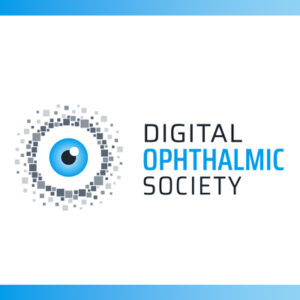Cornea
December 2018
by Vanessa Caceres
EyeWorld Contributing Writer
They’re another adjuvant treatment for dry eye symptoms
Moisture chamber glasses for dry eye aren’t new to the market, but they’re experiencing a resurgence.
That’s because patients are finding out about the glasses online and because they are less self-conscious about wearing them. In turn, eye care physicians are suggesting them more frequently.
There are different kinds of moisture chamber glasses, but the basic idea is a product that protects the eye from wind, dust, and other irritants. Several types of the glasses also have small moisture chambers on the side to provide humidity. Clear lens glasses and tinted sunglasses are available.
Because dry eye is a multifactorial disease, “dry eye glasses” may not be the ideal option for all dry eye patients. However, they do seem to help certain patients, including those with environmental triggers.
“Environmental factors like low humidity, wind, and drafts from ceiling fans or air conditioners can exacerbate the symptoms of dry eye,” said Beeran Meghpara, MD, assistant professor of ophthalmology, Wills Eye Hospital and Thomas Jefferson University, Philadelphia. “Moisture chamber glasses provide a protective barrier and increase periocular humidity in a noninvasive way.”
Because dry eye frequently has crossover with ocular allergies, Anat Galor, MD, associate professor of ophthalmology, Bascom Palmer Eye Institute, University of Miami, has found them to be effective in patients with environmental allergy triggers.
“Moisture chamber glasses with a variety of shapes and styles have become more comfortable and accepted in a society where dry eye and its incidence is finally being recognized as an omnipresent malady.”
Arun C. Gulani, MD
Even ophthalmologists not yet familiar with moisture chamber glasses may want to consider offering them, said Arun C. Gulani, MD, chief surgeon and founding director, Gulani Vision Institute, Jacksonville, Florida. He finds many dry eye patients referred to him come into his office already well informed about their condition and are ready to try innovative treatments.
Rebecca Petris, founder, Dry Eye Company, Poulsbo, Washington, thinks that recommending moisture chamber glasses to patients can improve treatment compliance and patient retention rates because they are affordable and easy to use. “Dry eye patients are symptom-driven. I can’t say that often enough,” she said. The Dry Eye Company website does not sell the glasses but will let customers know where they can find them.
“Moisture chamber glasses with a variety of shapes and styles have become more comfortable and accepted in a society where dry eye and its incidence is finally being recognized as an omnipresent malady,” Dr. Gulani said. In addition to a full spectrum and custom-designed approach to dry eye management, these moisture chamber glasses are a welcome adjunct in select and severe cases, he added.
Are they helpful?
One early pioneer for moisture chamber glasses is Kazuo Tsubota, MD, professor and chairperson, Department of Ophthalmology, Keio University School of Medicine, Tokyo, Japan. He has published several studies to address the effectiveness of the glasses, but he also has worn them daily for many years. “Dry eye symptoms vary day by day. If I am comfortable, I don’t bother to put water in the chambers, but if my eyes are dry, I put water into the chamber three to four times per day,” he said.
One of Dr. Tsubota’s most recent studies of moisture chamber glasses included 28 eyes of 14 probable dry eye subjects and compared the effectiveness of using the glasses against not using them at all during 10 minutes of wind exposure.1 The group wearing the glasses had no significant changes in tear evaporation rate and blink rate, but the second group did.
Dr. Meghpara said he notices improvements when patients use the glasses. “What I especially see is that patients find they use their artificial tears less frequently,” he said. “These glasses allow patients to resume activities they previously were unable to do because of their dry eye, including being outside, driving in a car with the heat or air conditioning on, and being on the computer.”
However, the most important point with the glasses, according to ophthalmologists familiar with them, is that they don’t cure dry eye. “This inability to treat the underlying cause [of dry eye] is the main reason many eye doctors don’t see the full impact of moisture chamber glasses. I think they need to see these as a symbiotic technology,” Dr. Gulani said.
“Whether the problem is ocular surface inflammation, meibomian gland dysfunction, aqueous tear deficiency, etc., the glasses are not a replacement for traditional early dry eye treatment such as artificial tears, warm compresses, topical cyclosporine or lifitegrast, and lid hygiene,” Dr. Meghpara said.
That the glasses do not treat dry eye could be viewed as an advantage, Dr. Tsubota said, because they do not have any side effects and do not overlap with other treatments.
When informing patients about the glasses, eye doctors will often refer patients to websites that sell them. They are not typically covered by insurance but they are usually affordable.
Tips for effective education on moisture chamber glasses
- Offer an in-office trial. Dr. Galor has a pair available for patients to try in the office for a few minutes to get a feel for them.
- Encourage patients to wear them frequently. Help patients identify when their dry eye is most vulnerable and encourage use of the glasses in that situation, such as on a windy day, when driving in a car with heat or air conditioning on, or working on the computer, Dr. Meghpara suggested.
- Use the glasses yourself. By wearing them, you can get a better idea of how to guide patients in their use.
- Listen to knowledgeable patients. Dr. Gulani has seen patients who have already done extensive research on the glasses and informed him of available choices and costs.
- Reiterate to patients that they are not a dry eye cure-all. Recommend other necessary treatments in addition to the glasses.
Reference
- Ogawa M, et al. Evaluation of the effect of moist chamber spectacles in patients with dry eye exposed to adverse environment conditions. Eye Contact Lens. 2018;44:379–383.
ARTICLE SIDEBAR
Moisture chamber shields
In addition to moisture chamber glasses, moisture chamber goggles or shields play a role in soothing dry eyes, said Inna Ozerov, MD, Miami Eye Institute, Hollywood, Florida.
Dr. Ozerov finds moisture chamber goggles to be helpful for those with severe dry eye, particularly if they have night exposure keratitis. “Night exposure keratitis can occur from incomplete lid closure due to previous lid surgery or floppy lid syndrome,” she said. “They are an effective treatment solution as they create a more humid environment around your eyes, but the practical application is not widespread. In my experience, patients really don’t like having something on their face when they sleep.”
Editors’ note
Dr. Tsubota has a copatent with Jins Inc. for Jins Moisture Glasses. The other sources have no financial interests related to their comments.
Contact information
Galor: agalor@med.miami.edu
Gulani: gulanivision@gulani.com
Meghpara: bmeghpara@willseye.org
Ozerov: iozerov@gmail.com
Petris: rebecca@dryeyecompany.com
Tsubota: tsubota@z3.keio.jp





